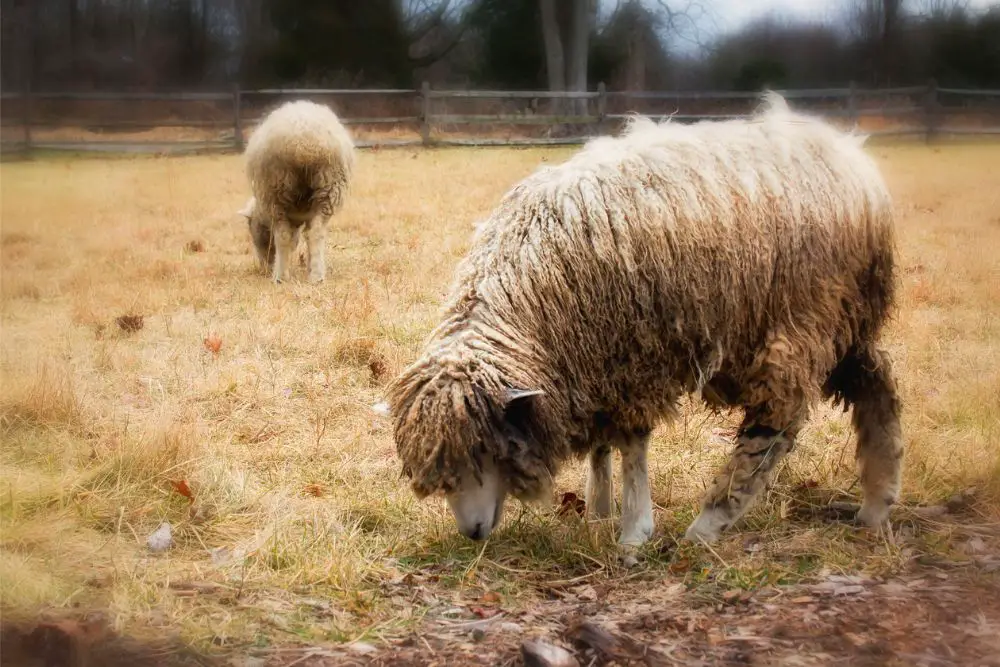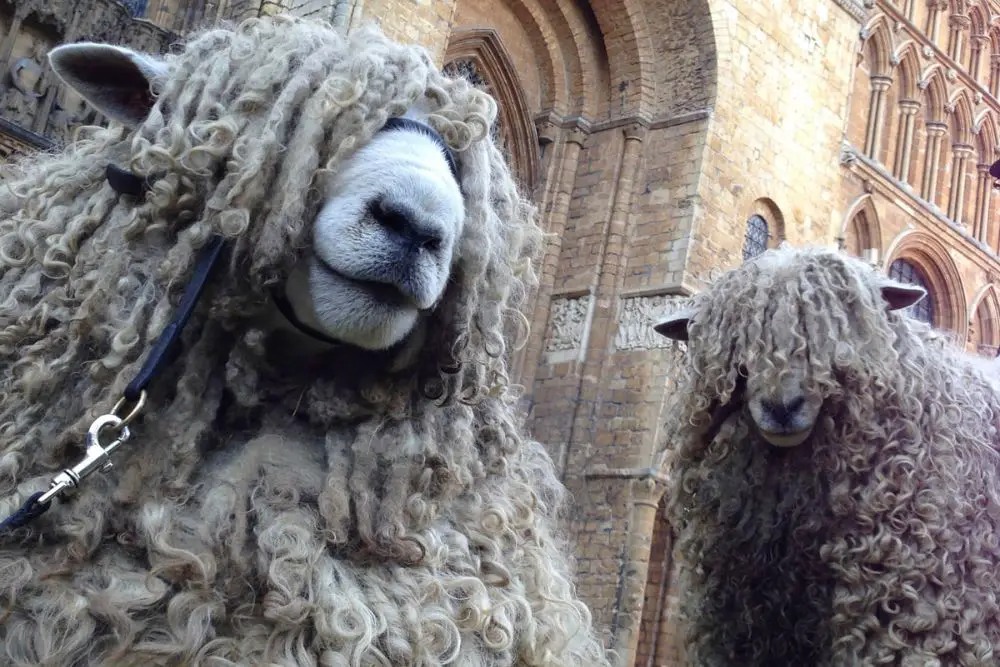Lincoln Sheep are a wool breed native to England that produces the heaviest and longest fleece in the world, which has become popular with spinners and weavers. They are a great choice for those seeking a large, white domestic sheep that produces both lustrous, lengthy wool and flavorful mutton.
This article covers history of the Lincoln sheep, their breed attributes, and examine the characteristics of their world-famous wool in detail. It also lists the positive attributes and benefits of owning Lincoln sheep, so you can decide if this breed is suitable for your farm.
Table of Contents
Where Does The Lincoln Sheep Come From?
The Lincoln sheep is a domestic sheep that comes from the Lincolnshire region of England. It is one of only four longwool sheep breeds native to Britain, including the Leicester, Cotswold, and Wensleydale, and is the largest of the four.
This British sheep features a fleece of incredible length and luster.
The Lincoln has been used as a terminal sire for breeding sheep around the world to improve the quality and length of the wool they produce.
They were first crossbred with Robert Bakewell’s flock of Leicester sheep in the 1700’s, and the offspring of this pairing was impressive in both size and the quality of wool they produced. They were included in the Royal Show in England, and gained worldwide popularity as a result.
The Lincoln sheep was exported to various countries around the world in the 1800’s including Canada, Australia, New Zealand, and the United States.
The Lincoln Longwool Sheep Breeders association was founded in Britain in 1892 though they only register pure white Lincolns. In America, the National Lincoln Sheep Breeders Association registers both white and naturally colored Lincoln’s.
Today, the Lincoln sheep is considered a rare breed due to the small number of registered ewes in the United Kingdom. It is also considered at risk according to the Rare Breeds Survival Trust.
Lincoln Sheep Breed Characteristics
| Characteristics | Description |
| Origin | Lincolnshire, England |
| Appearance | Both rams and ewes should have wide heads and wide-set nostrils with an open face and distinctive forelock. Their hooves should be black, and the ears should be blue-skinned. Their bodies should be distinctly rectangular with a large rib cage and stout legs. They should have long wavy fleece hanging from most of their body, aside from a small area on the forefront of their legs. |
| Wool | Micron range from 34 to 41 USDA wool grade from 36’s to 46’s Staple length is between 8 and 15 inches Grease fleece weight of 12 to 16 pounds Yield between 55 to 70 percent |
| Weight | Rams weight 240lbs and 300lbs Rams have masculine appearance with some neck wrinkles Ewes weight 200lbs and 250lbs with a feminine look |
| Fertility | Easy lambing with Ewes making great mothers The average life expectancy is 10 to 12 years with proper care |
| Meat | Average |
| Environment | Best for cooler climates |
| Common Uses | Wool production primarily, but is also used for meat |

What Kind Of Fleece Does Lincoln Sheep Produce?
This British longwool breed of sheep produces the heaviest and longest fleece in the world. Despite the coarse nature of the fleece, it retains incredible luster and is popular with spinners and weavers.
The wool is naturally crimped, and grows an inch every month. It readily accepts dye and is a versatile fiber that crafters around the world appreciate.
Why Should I Raise Lincoln Sheep?
There are many reasons why you should consider raising Lincoln Sheep on your sheep farm:
- Lincoln sheep are dual-purpose and produce wool and mutton
- Mature ewes make wonderful mothers and have easy lambing
- They are one of the world’s largest breeds for wool production purposes
- Fleece of the Lincoln is profitable because it is incredibly versatile
- They are a docile sheep with a good nature despite their large size
- They are naturally resistant to foot rot
- Requires only annual shearing
- Perfect for sustainable farming operations

